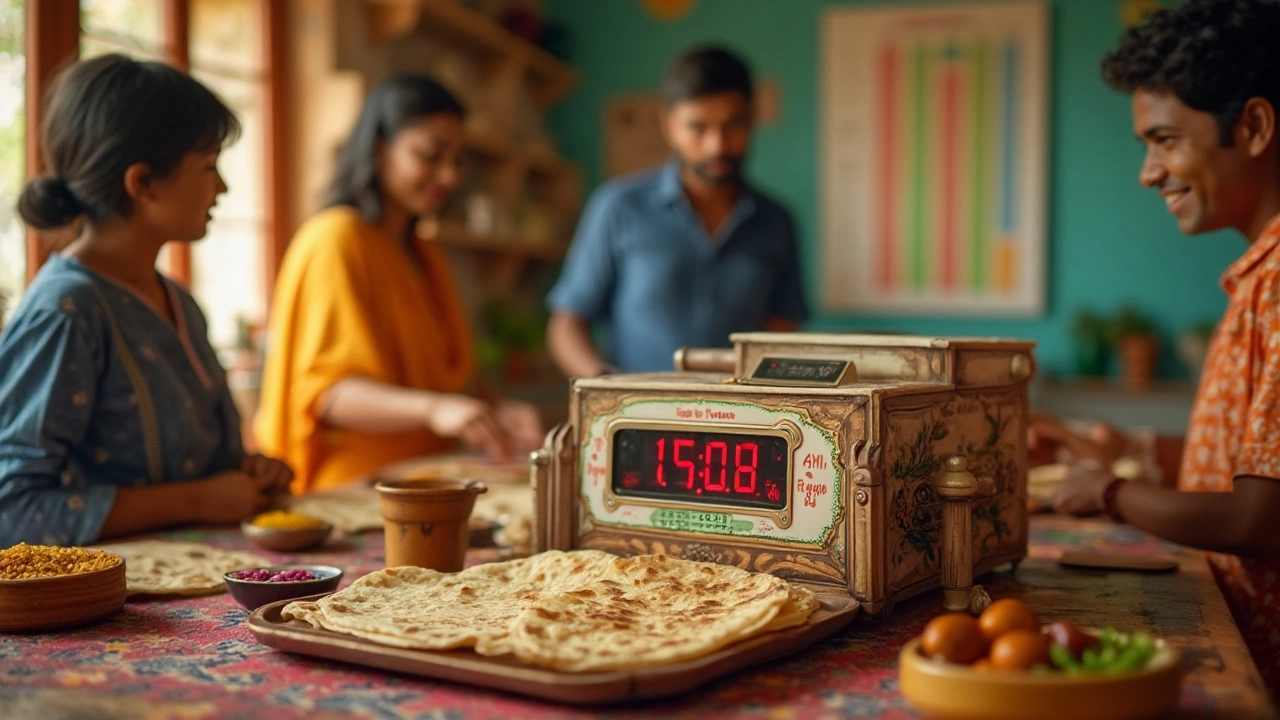Daily Chapati Intake: Find Your Perfect Portion for Health & Flavor
When talking about daily chapati intake, the amount of chapatis you eat each day and how that fits into your overall diet. Also known as daily chapati consumption, it matters because chapatis are a staple across India and a big source of carbs, fiber, and protein. Chapati a thin, unleavened flatbread made from whole wheat flour provides the vehicle for many meals, so understanding its role helps you stay energized without overdoing calories.
Why Track Your Chapati Consumption?
One reason to monitor daily chapati intake is that each chapati carries roughly 70–80 calories depending on size and thickness. Calorie count the total energy provided by a single chapati adds up quickly if you’re serving three or four per meal. Knowing the portion size the number and weight of chapatis you eat in a day lets you balance carbs with protein‑rich dals, veg veggies, and healthy fats. The relationship is simple: larger portions increase total energy, which can affect weight management, while mindful portions keep you full thanks to the fiber in whole wheat flour the primary ingredient in traditional chapatis, packed with fiber and micronutrients. Whole wheat flour also slows glucose release, meaning you stay satisfied longer and avoid spikes in blood sugar.
Beyond calories, chapati intake ties into broader nutrition goals. For example, a typical Indian diet may include two to three chapatis per meal, providing roughly 15–20 grams of protein when paired with dal or paneer. The nutrition the combination of carbs, protein, fiber, and micronutrients in chapatis improves gut health and supports active lifestyles. If you’re aiming for weight loss, trimming to one or two chapatis per meal while boosting vegetable portions keeps the meal balanced. Conversely, athletes may increase to four chapatis for extra carbs before training. The key is to align your intake with activity level, metabolic needs, and personal health goals. Understanding how chapati calories, fiber, and protein interact gives you a roadmap to adjust portions without sacrificing the comforting taste of this everyday flatbread.
Practical tips make tracking easier. Start by measuring the dough ball before rolling—about 30 g yields a 6‑inch chapati of roughly 70 calories. Use a kitchen scale or simply count the number of circles on your plate. Pair each chapati with a protein source (dal, lentils, paneer) and a vegetable dish to create a balanced plate. If you’re cooking for a family, set a serving guideline: one chapati per child, two for adults, and an extra for guests who love carbs. Remember that cooking methods matter; a hot tawa and a quick flip keep the chapati soft, while adding a drizzle of oil after cooking can improve texture without adding many extra calories. By treating daily chapati intake as a flexible tool rather than a strict rule, you can enjoy traditional meals while staying on track with health goals.
Now that you’ve got a clear picture of what daily chapati intake means, why it matters, and how to tailor it to your lifestyle, dive into the collection below. You’ll find troubleshooting tips for puff‑less roti, secrets to softening chapatis with the right amount of oil, and nutrition breakdowns that make planning meals a breeze.

Roti Calories Calculator: The Ultimate Tool for Diet Planning
Discover how a Roti Calories Calculator can become an essential tool for your diet planning, helping you understand the calorie content in every roti you eat. Learn about body mass index (BMI), the caloric value of a single roti, and calculate daily chapati intake for effective weight management. Equip yourself with step-by-step guidance, legal considerations in food labeling, and insights tailored to Indian dietary habits.